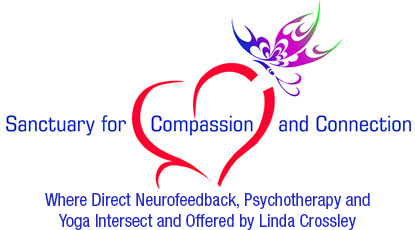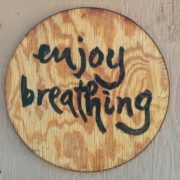5 Intention-setting Ideas to Support Change
I believe most of us have thought to ourselves “I hate change” at least once in our lives. And the message we often hear is “Change is hard”. Perhaps it is these messages, thoughts, and/or beliefs that underlie the approximate success rate of 10% for the New Year resolutions set at this time of year!
On the other hand, we know that change is inevitable and constant – perhaps the only experience we can count on to always be there. The hope that comes from the trust in change is that we don’t get stuck in a rut. However, the universe invites us to be co-creators of the changes we want to make in our lives. This co-creation requires us to commit to learning new things . . . whether that is to learn to do something new or to learn something new about ourselves.
We are very supported at this time to initiate the process of change due to the fact that we are in the midst of a current Eclipse Gateway. Eclipses support growth and the 2 weeks between the Solar Eclipse (12/26/9) and the Lunar Eclipse (1/10/20) is a potent time for transformation and renewal. So, if you might want to catch the wave of energy, consider trying the following intention-setting ideas to support change this month:
- Reframe Change. Perhaps consider simply reframing change as growth – or a growth opportunity – as it will help move you in the direction of embracing change versus denying its value. You still have a choice, whether to take the growth opportunity or not. As we begin to lean into the process of change or growth, we must also recognize the loss it creates. If we decide to try something new, it often means that something we were familiar with falls away, even if it is due to the limits of time or resources. Therefore, it is important to honor our feelings around the loss and even doubt that might arise around whether we made the right choice for our growth. In those moments, reminding yourself that all of our choices bring with them information to help guide us toward our highest good will soothe the doubt, so you can’t make a bad one!
- Embrace Emotions! Fear is often underlying the sense of loss of the familiar and doubt in the process of change, so it is important to look fear in the face. Remember, emotion (even fear) is simply [E]nergy in [motion], which means turning to look at it even for a moment, instead of distracting yourself or running from it, changes it immediately! Inviting your greatest fear, and its various emotional friends, such as anxiety, anger, or sadness, to sit for a moment with you so you might listen to what it has to say, will begin to bring clarity around what it is that you value most in life, not what others have told you in the past. Emotions are one of the most powerful guides on our journey to discover our highest self. Consider allowing your emotions to participate in your decision-making process and use their energy to guide you forward toward fulfilling your heart’s true desires!
- Think Small. We tend to set lofty new year resolutions and when we don’t experience immediate results, we might get discouraged, providing fuel to our fears. I like to remind myself that Rome wasn’t built in a day. So, perhaps consider a very small change you would like to make in your life, and put it on your calendar every day, so you can track your progress. For example, you might decide to add more walking to your daily routine. Consider starting with very specific, yet small goals, such as parking further away from the stores you visit, taking the stairs at work or walking around the block. Then each day, check it off your list when you achieved the goal and celebrate in some way, even if only to say out loud to yourself “See, I told you I could do it!”
- Find a Partner. Whether your heart desires more peace, health, happiness, clarity, or love, change or growth requires you to transform into someone different than who you are currently. Having someone support you on your journey of transformation is very helpful. This person can be a source of encouragement when you sense discouragement creeping in. They can challenge the fear that works to disconnect you from your highest self. They can help to hold us accountable as well as provides support when we do begin to sense the discomfort that comes with change. Discomfort is part of the process of change so having a partner to share those experiences of discomfort with can make us feel less alone on our journey. Consider identifying someone in your life that might be willing to be that support partner for you, someone that believes in you and will help you embrace the growth your desire.
- Visualize. It is important to visualize the change you desire, because if you can’t imagine the change you want, how do you know what direction to start out in on your journey? Visualizing the result of your efforts to change or grow will support the discovery process. Remember too that discovery is not a linear, straight line. Often, it involves taking a winding road that might make you feel a little lost for awhile. In those moments of disorientation, bringing your visualization back into mind will remind you of the value of change or growth, deepening your understanding of your heart’s desire and refueling the process of change. Perhaps consider a tool to document your visualization, whether it is to draw it out, write it down, or create a vision board, so that you might reflect on your heart’s desire each day. This practice will ease the integration of the new steps you are taking to co-create the new you!.
As always, if you try any of these intention-setting ideas for holistic health, I would love to hear about the impact they might have had for you. Please send me an email at linda@sanctuary4compassion.com to share!












